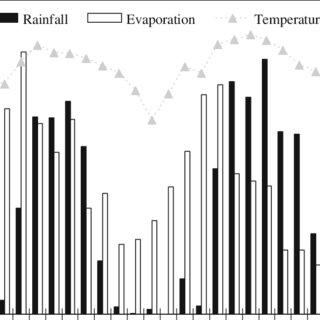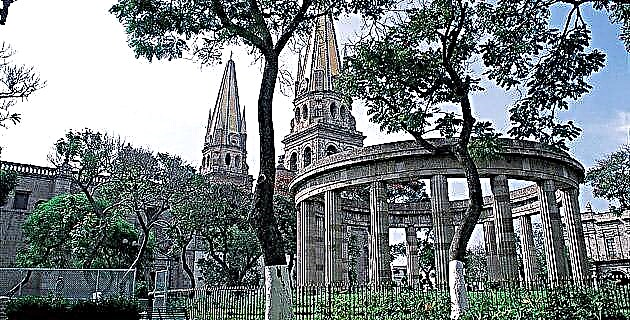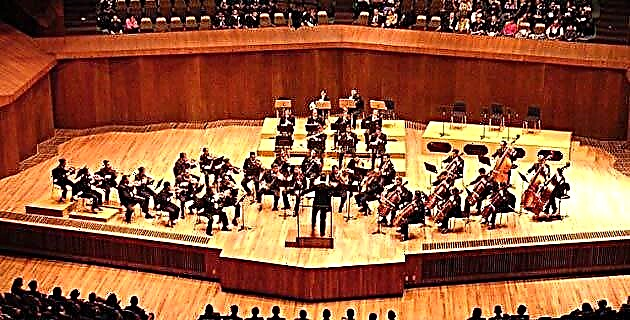
Learn about the antecedents and contributions of Mexican music to this form of universal expression of great importance.
The history of Mexican concert music has gone through various periods, aesthetic currents and musical styles throughout the 20th century. It began with a romantic period between 1900 and 1920, and continued with a period of nationalist affirmation (1920-1950), both tempered by the presence of other simultaneous musical currents; During the second half of the century, various experimental and avant-garde trends converged (from 1960 on).
The production of the Mexican composers of the 20th century is the most abundant in our musical history, and shows a very wide range of musical practices, aesthetic proposals and compositional resources. To summarize the diversity and plurality of Mexican concert music during the 20th century, it is convenient to refer to three historical periods (1870-1910, 1910-1960 and 1960-2000).
The transition: 1870-1910
According to the traditional historical version, there are two Mexicos: the one before the Revolution and the one that was born from it. But some recent historical studies show that, in several respects, a new country began to emerge before the armed conflict of 1910. The long historical period of more than three decades dominated by Porfirio Díaz was, despite its conflicts and mistakes, a stage of economic, social and cultural development that laid the foundations for the emergence of a modern Mexico, linked to other European and American countries. This international opening was the foundation of a cultural and musical development that was nourished by new cosmopolitan trends and began to overcome the inertia of stagnation.
There are several historical indications that show that concert music began to change after 1870. Although the romantic gathering and lounge continued to be favorable environments for intimate music, and the social taste for stage music was reaffirmed (opera, zarzuela, operetta, etc.), there is a gradual change in the traditions of composing, performing and disseminating music. In the last quarter of the 19th century, the Mexican pianistic tradition (one of the oldest in America) was consolidated, orchestral production and chamber music were developed, folk and popular music were reincorporated into professional concert music, and new repertoires more ambitious in form and genre (to transcend the dances and short pieces of the room). Composers approached new European aesthetics to renew their languages (French and German), and the creation of a modern musical infrastructure was started or continued that would later be heard in theaters, music halls, orchestras, music schools, etc.
Mexican musical nationalism arose from the social and cultural impact of the Revolution. In various Latin American countries, composers undertook the investigation of a national style towards the middle of the 19th century. The search for national identity in music began with a romantic indigenous movement in Peru, Argentina, Brazil and Mexico, based on pre-Hispanic symbols attractive to opera. The Mexican composer Aniceto Ortega (1823-1875) premiered his opera Guatimotzin in 1871, on a libretto that presents Cuauhtémoc as a romantic hero.
In the late 19th and early 20th centuries, a clear musical nationalism was already perceived in Mexico and its sister countries, influenced by European nationalist currents. This romantic nationalism is the result of a process of "creolization" or musical miscegenation between European ballroom dances (waltz, polka, mazurka, etc.), American vernacular genres (habanera, dance, song, etc.) and the incorporation of local musical elements, expressed through the dominant European romantic language. Among the romantic nationalist operas are El rey poeta (1900) by Gustavo E. Campa (1863-1934) and Atzimba (1901) by Ricardo Castro (1864-1907).
The aesthetic ideas of the romantic nationalist composers represented the values of the middle and upper classes of the time, in accordance with the ideals of European romanticism (raising the music of the people to the level of art). It was about identifying and rescuing certain elements of popular music and covering them with the resources of concert music. The numerous salon music published during the second half of the 19th century offered arrangements and virtuosic versions (for piano and guitar) of the famous "national airs" and "country dances", through which vernacular music was introduced to the concert halls. concert and family room, looking presentable for the middle classes. Among the Mexican composers of the 19th century who contributed to the search for national music are Tomás León (1826-1893), Julio Ituarte (1845-1905), Juventino Rosas (1864-1894), Ernesto Elorduy (1853-1912), Felipe Villanueva (1863-1893) and Ricardo Castro. Rosas became internationally famous with his waltz (On the waves, 1891), while Elorduy, Villanueva and others cultivated the tasty Mexican dance, based on the syncopated rhythm of the Cuban contradanza, origin of the habanera and the danzón.
Eclecticism: 1910-1960
If anything characterizes Mexican concert music during the first six decades of the 20th century, it is eclecticism, understood as the search for intermediate solutions beyond extreme positions or towards a single aesthetic direction. Musical eclecticism was the point of confluence of various styles and trends used by Mexican composers, those who cultivated more than one musical style or aesthetic current during their creative career. In addition, many composers searched for their own musical style through hybridization or stylistic mixing, based on the various aesthetic currents that they assimilated from European and American music.
In this period, it is appreciated that the majority of Mexican composers followed an eclectic path, which allowed them to approach various styles combining national or other musical elements. The main trends cultivated during the period 1910-1960 were, in addition to the nationalist, post-romantic or neo-romantic, impressionist, expressionist, and neoclassical, in addition to other exceptional ones, such as the so-called microtonalism.
During the first half of the 20th century, music and the arts were not immune to the great influence exerted by nationalism, an ideological force that helped the political and social consolidation of Latin American countries in the search for their own cultural identity. Although musical nationalism diminished its importance in Europe around 1930, in Latin America it continued as an important current until beyond 1950. Post-revolutionary Mexico favored the development of musical nationalism based on the cultural policy applied by the Mexican state in all countries. Arts. Anchored in the nationalist aesthetic, the official cultural and educational institutions supported the work of artists and composers, and fostered the consolidation of a modern musical infrastructure based on teaching and dissemination.
The musical nationalism Consists of the assimilation or recreation of vernacular popular music by composers of concert music, either directly or indirectly, evident or veiled, explicit or sublimated. Mexican musical nationalism was prone to stylistic mixing, which explains the emergence of two nationalist phases and various hybrid styles. The romantic nationalism, headed by Manuel M. Ponce (1882-1948) During the first two decades of the century, it emphasized the rescue of the Mexican song as the basis of a national music. Among the composers who followed Ponce in this way were José Rolón (1876-1945), Arnulfo Miramontes (1882-1960) and Estanislao Mejía (1882-1967). The indigenous nationalism had as its most notable leader Carlos Chávez (1899-1978) for the next two decades (1920 to 1940), A movement that sought to recreate pre-Hispanic music through the use of indigenous music of the time. Among the many composers of this indigenous phase we find Candelario Huízar (1883-1970), Eduardo Hernández Moncada (1899-1995), Luis Sandi (1905-1996) and the so-called “Group of the four”, formed by Daniel Ayala (1908-1975), Salvador Contreras (1910-1982 ), Blas Galindo (1910-1993) and José Pablo Moncayo (1912-1958).
Between the 1920s and 1950s, other hybrid nationalist styles emerged such as the impressionist nationalism, present in certain works of Ponce, Rolón, Rafael J. Tello (1872-1946), Antonio Gomezanda (1894-1964) and Moncayo; the realistic and expressionist nationalism of José Pomar (1880-1961), Chávez and Silvestre Revueltas (1899-1940), and up to Neoclassical nationalism practiced by Ponce, Chávez, Miguel Bernal Jiménez (1910-1956), Rodolfo Halffter (1900-1987) and Carlos Jiménez Mabarak (1916-1994). At the end of the fifties a clear exhaustion of the different versions of the Mexican musical nationalism, due in part to the openness and search of composers towards new cosmopolitan currents, some of them educated in the United States and in postwar Europe.
Although musical nationalism prevailed until the 1950s in Latin America, from the beginning of the 20th century other musical currents emerged, some alien and others close to nationalist aesthetics. Certain composers were drawn to musical aesthetics opposed to nationalism, recognizing that nationalist styles led them down the easy route of regionalist expression and away from new international trends. A unique case in Mexico is that of Julián Carrillo (1875-1965), whose extensive musical work went from an impeccable Germanic romanticism towards microtonalism (sounds lower than half tone), and whose theory of Sound 13 earned him international fame. Another special case is that of Carlos Chavez, who, after embracing nationalism with fervor, spent the rest of his career as a composer practicing, teaching and spreading the most advanced currents of cosmopolitan avant-garde music.
The (neo / post) romanticism It was successful since the beginning of the 20th century, being a fortunate style among the public's taste for its tonal efficiency and sentimental evocation, as well as among composers for its versatility towards stylistic mixing. Among the first neo-romantic composers of the century (Tello, Carrasco, Carrillo, Ponce, Rolón, etc.), some were so throughout their lives (Carrasco, Alfonso de Elías), others ceased to be so later (Carrillo, Rolón) and some they sought the combination of this style with other compositional resources, whether nationalist, impressionist or neoclassicist (Tello, Ponce, Rolón, Huízar). The novel French influence of impressionism at the beginning of the century (Ponce, Rolón, Gomezanda) left a deep mark on the work of some composers (Moncayo, Contreras) until the 1960s. Something similar happened with two other currents that coexisted with the previous one: expressionism (1920-1940), with his search for expressive intensity beyond formal balance (Pomar, Chávez, Revueltas), and neoclassicism (1930-1950), with his return to classical forms and genres (Ponce, Chávez, Galindo, Bernal Jiménez, Halffter, Jiménez Mabarak). All these currents allowed the Mexican composers of the period 1910-1960 to experiment along the paths of musical eclecticism, until achieving a stylistic hybridity that led to the coexistence of multiple identities, the various faces of our Mexican music.
Continuity and rupture: 1960-2000
During the second half of the 20th century, Latin American concert music experienced trends of continuity and rupture that gave rise to a diversity of musical languages, styles and aesthetics in compositional practice. In addition to the plurality and flourishing of diverse currents, there is also a gradual trend towards cosmopolitanism in large cities, more open to the influences of international musical movements. In the process of assimilation of the “new music” from Europe and the United States, the most progressive Latin American composers went through four stages in the adoption of external models: squalitative choice, imitation, recreation and transformation (appropriation), according to social environments and individual needs or preferences. Some composers realized that they could contribute from their Latin American countries to cosmopolitan musical trends.
Starting in 1960, new musical currents of an experimental nature appeared in most of the American countries. Composers who joined the breakout trends soon discovered that it would not be easy to obtain official endorsements to publish, perform, and record their music, prompting some Latin American creators to settle in Europe, the United States, and Canada. But this difficult situation began to change from the seventies in Argentina, Brazil, Chile, Mexico and Venezuela, when the composers of the "new music" They found support from international organizations, formed national associations, created electronic music laboratories, taught in music schools and universities, and their music began to be disseminated through festivals, meetings and radio stations. With these strategies, the isolation of avant-garde composers was lessened, who could henceforth interact and enjoy better conditions to create and disseminate so-called contemporary music.
The break with the nationalist currents began in Mexico in the late 1950s and was led by Carlos Chávez and Rodolfo Halffter. The generation of the rupture produced notable composers of plural tendencies that today are already “classics” of the new Mexican music: Manuel Enríquez (1926-1994), Joaquín Gutiérrez Heras (1927), Alicia Urreta (1931-1987), Héctor Quintanar (1936) and Manuel de Elías (1939). The next generation consolidated the experimental and cutting-edge searches with creators as important as Mario Lavista (1943), Julio Estrada (1943), Francisco Núñez (1945), Federico Ibarra (1946) and Daniel Catán (1949), among several others. Authors born in the 1950s continued to open up to new languages and aesthetics, but with a clear tendency towards hybridity with very diverse musical currents: Arturo Márquez (1950), Marcela Rodríguez (1951), Federico Álvarez del Toro (1953), Eugenio Toussaint (1954), Eduardo Soto Millán (1956), Javier Álvarez (1956), Antonio Russek (1954) and Roberto Morales (1958) , among the most prominent.
The currents and styles of Mexican music from the 1960-2000 period are diverse and plural, in addition to that which broke with nationalism. There are several composers who can be located within a kind of neo-nationalism, due to their insistence on cultivating styles related to popular music mixed with new techniques: among them Mario Kuri Aldana (1931) and Leonardo Velázquez (1935). Some authors approached a new neoclassical trend, as is the case of Gutiérrez Heras, Ibarra and Catán. Other composers have leaned towards a trend called "Instrumental renaissance", that seeks new expressive possibilities with traditional musical instruments, whose most important cultivators are Mario Lavista and some of his disciples (Graciela Agudelo, 1945; Ana Lara, 1959; Luis Jaime Cortés, 1962, etc.).
There are several musical creators who have been involved in new experimental currents, such as the so-called "New complexity" (search for the complex and conceptual music) in which he has excelled Julio Estrada, as well as the electroacoustic music and the powerful influence of musical computing from the eighties (Álvarez, Russek and Morales). In the last decade, certain composers born in the 1950s and 1960s are experimenting with hybrid trends that recreate urban popular music and Mexican ethnic music in a new way. Some of these scores have neotonal features and a direct emotion that have managed to captivate wide audiences, far from avant-garde experiments. Among the most consistent are Arturo Márquez, Marcela Rodríguez, Eugenio Toussaint, Eduardo Soto Millán, Gabriela Ortiz (1964), Juan Trigos (1965) and Víctor Rasgado (1956).
Tradition and renewal, plurality and diversity, eclecticism and versatility, identity and multiplicity, continuity and rupture, search and experimentation: these are some useful words to understand a long musical history that, begun more than a hundred years ago, has developed the musical creativity of Mexico until reaching a place of privilege among the American countries, as well as appreciable world recognition in the multiple recordings (national and international) that the works of our composers have deserved, the various faces of 20th century Mexican music.
Source: México en el Tiempo No. 38 September / October 2000











